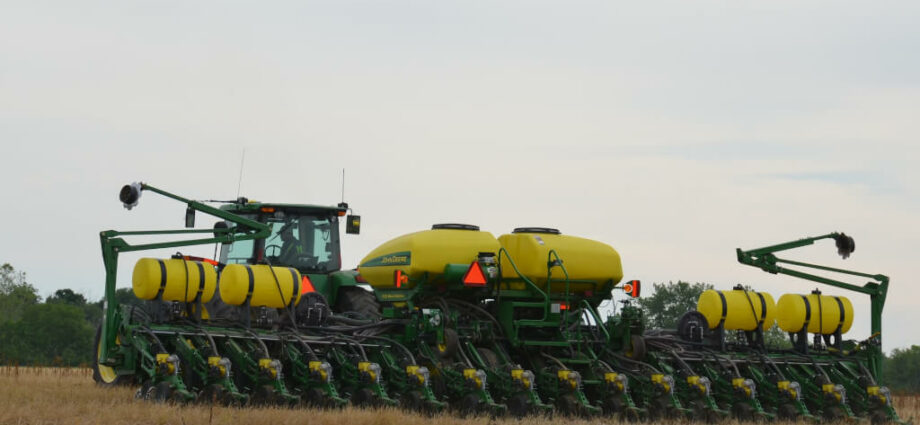We’ve often been asked about the silent and less-celebrated contributors to the whiskey narrative – pesticides. Can the chemicals designed to protect crops influence the flavor and integrity of your beloved whiskey? And more importantly, are there potential health implications?
Whiskey’s Starting Point: The Grains
Whiskey begins its life as grains. Be it corn, barley, rye, or wheat; these crops, like all others, are susceptible to pests. To ensure good yield and quality, farmers sometimes resort to pesticides. In the US and Europe, there are strict regulations governing pesticide use, ensuring that residues on food and feed crops stay within safe limits.
The rigorous oversight of pesticide use in the United States is an example of the country’s commitment to ensuring the safety and health of its citizens. When it comes to whisky production, these regulations become paramount given the widespread consumption of this beloved spirit.
In the US, the Environmental Protection Agency (EPA) holds primary responsibility for setting tolerance levels for pesticide residues on food and feed crops. This means that the EPA determines the maximum permissible levels of pesticides that can be present in or on foods. The basis for setting these tolerance levels is a meticulous scientific assessment that examines the potential health effects of consuming these residues. The process considers various factors like the amount of food people eat, the frequency of consumption, and the potential cumulative effects of pesticides.
To understand the depth of these regulations, let’s consider a few examples:
- The Food Quality Protection Act (FQPA) of 1996 mandates that the EPA reassess all existing pesticide tolerances to ensure they meet the safety standards outlined in the act. This pivotal legislation set a more stringent safety standard that requires an explicit determination that a pesticide’s use on food is safe, especially focusing on the protection of infants and children.
- The Pesticide Data Program (PDP), run by the US Department of Agriculture (USDA), consistently tests various foods for pesticide residues. In 2019, the PDP found that over 99% of the sampled products had pesticide residues well below benchmark levels set by the EPA. It ensures that even if residues are present, they are within acceptable limits.
- The EPA has, on numerous occasions, taken steps to either limit or prohibit the use of certain pesticides found to be particularly harmful. For instance, chlorpyrifos, once widely used, has seen significant restrictions in its application due to health concerns, especially related to neurological development in children.
Specifically looking at grains like barley, which are integral to whisky production, it’s reassuring to note that the National Residue Program (NRP) of the USDA’s Food Safety and Inspection Service conducts tests to ensure that residues on these grains don’t exceed the established Maximum Residue Limits (MRLs).
Translating these stringent regulations into the context of whisky means that the chances of having harmful pesticide residues in your drink are minimal. Whisky producers, especially those in the US, are not just bound by these regulations but often also invest in ensuring their ingredients are of the highest quality. After all, the quality and safety of the grains directly influence the end product’s taste, texture, and overall profile.
While the concerns about pesticides are valid, the multiple layers of regulatory oversight in the US offer a robust safety net. The country’s continuous effort to refine, update, and implement these regulations ensures that with the whisky in your glass, safety remains a priority.
Is the Distillation Process a Natural Filter?
You might assume that distillation, given its transformative nature, could eliminate any pesticide residues. To an extent, you’d be right. Distillation does act as a purifying process. As grains are mashed, fermented, and then distilled, many contaminants, including some pesticide residues, don’t make it to the final product. However, not all pesticides have the same properties. Some might carry over into the distilled spirit, albeit in reduced amounts.
Consider an experiment conducted by the Oregon State University. Researchers discovered that certain pesticides in a fermented mash could carry over into the distilled spirits, though the amounts were minimal. The key takeaway? While distillation reduces pesticide residues, it doesn’t eliminate them.
Are Organic Whiskeys a Cleaner Choice?

With the organic movement gaining momentum, organic whiskeys have made an entrance. Distilleries that tout their whiskey as organic use grains that haven’t been treated with synthetic pesticides. If your concern about pesticides is significant, going organic is an option. However, remember that organic farming does use pesticides too – they’re just natural or non-synthetic.
Here’s a closer look at top organic whiskies that have captured attention for their commitment to purity and sustainable practices.
1. Benromach Organic
- Why It’s Organic: Certified by the UK Soil Association, Benromach Organic ensures that the barley used is organically grown without synthetic pesticides. The oak casks in which it’s matured are also certified organic, eliminating the chance of any contamination.
- This Speyside whisky was the first to have a fully organic-certified bottling process.
2. Bruichladdich The Organic Scottish Barley
- Why It’s Organic: Originating from Islay, Bruichladdich sources barley from organic farms in Scotland. The absence of synthetic chemicals in the soil gives this whisky its distinct taste.
- Notable Fact: It’s distilled from 100% organic Scottish barley and matured in American oak casks, underlining its commitment to authenticity.
3. Koval Bourbon Whiskey
- Why It’s Organic: Koval, a Chicago-based distillery, ensures that all grains used in their whiskies are organically grown. The bourbon, in particular, is made from organic corn and millet.
- Koval works closely with local farmers to promote sustainable farming and grain sourcing.
4. Cedar Ridge Iowa Bourbon
- Why It’s Organic: Cedar Ridge prioritizes organically farmed corn for their bourbon. This dedication ensures a high-quality spirit, devoid of synthetic pesticide residues.
- Notable Fact: It’s notable for being Iowa’s first bourbon since Prohibition and emphasizes locally sourced grains.
5. Deanston Virgin Oak
- Why It’s Organic: Made with organic barley and matured in new oak barrels, Deanston ensures a pure whisky-making process, aligning with its organic certification.
- Distilled in the Highlands, it’s bottled at 46.3% ABV, and the lack of synthetic pesticides allows the raw, natural flavors to shine through.
When assessing organic whiskies, understanding their commitment to organic farming is crucial. Organic does not merely denote the absence of synthetic pesticides. It’s indicative of a broader philosophy that respects the environment, prioritizes sustainability, and aims to deliver a product that’s true to its origins.
Pesticides and Flavor Profile: Can You Taste the Difference?
Whiskey experts often speak of terroir – the idea that local environmental factors, including soil and climate, influence flavor. But do pesticides play a role in this delicate balance?
While there isn’t concrete evidence suggesting pesticides drastically alter a whiskey’s flavor, anecdotal evidence exists. Some distillers believe that the healthier the grain, the better the final product. Healthier grains can resist pests without the need for excessive chemicals, resulting in a whiskey that truly captures the essence of its origin.
Are Health Implications A Genuine Concern?

The natural question then arises: If there are pesticide residues in whiskey, should you be concerned for your health? Regulatory bodies in the US and Europe set Maximum Residue Limits (MRLs) for pesticides in various foods and drinks. These limits are set well below levels that could pose health risks. Most whiskeys, even those made from conventionally grown grains, are likely to contain pesticide residues well below these limits.
However, if you’re someone who likes to err on the side of caution, or if you consume whiskey frequently, it might be worth considering options like organic whiskeys or brands known for sustainable farming practices.
The Broader Environmental Impact
Beyond the bottle, there’s another consideration. Pesticide use doesn’t just potentially affect your whiskey; it impacts ecosystems. Runoffs can contaminate water sources, harm non-target plants and animals, and disrupt delicate ecological balances. Distilleries that prioritize sustainable farming not only potentially offer a purer product but also contribute to a healthier environment.
When assessing the impact of pesticides on whiskey, it’s evident that the stringent regulations in place, especially in the US, minimize potential risks. From the rigorous standards set by agencies like the EPA to the organic movement offering cleaner choices, you, as consumers have a safety net. Whiskey production, reliant on the quality of grains, inherently prioritizes safety due to the direct influence on the end product’s profile. While vigilance is always wise, given the multiple checks and balances, undue concern regarding pesticides in your whiskey is largely unwarranted.

